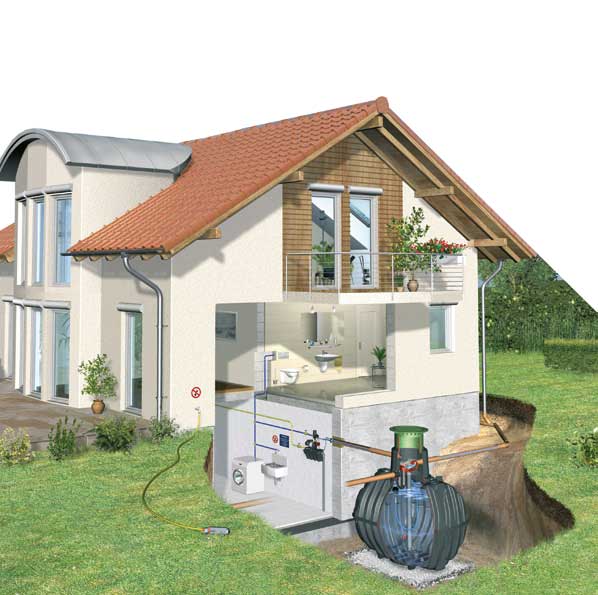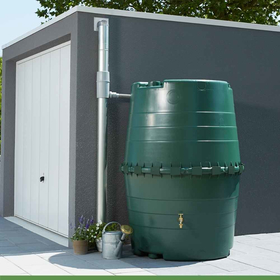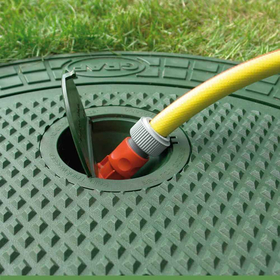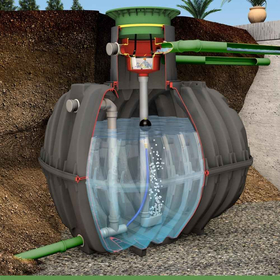How to collect rainwater? Everything you need to know
Water is an essential resource. However, between pollution, global warming and increasing per capita consumption, it is becoming more and more valuable.
To give you precise figures, from 1975 to 2019, our daily consumption of domestic water increased from 106 liters per day to around 143 liters/person (in France) . Or 40% more.
We are using more and more water even though it is becoming increasingly scarce. Here is the map from the Ministry of Ecological Transition on the risk of drought (May 2020).
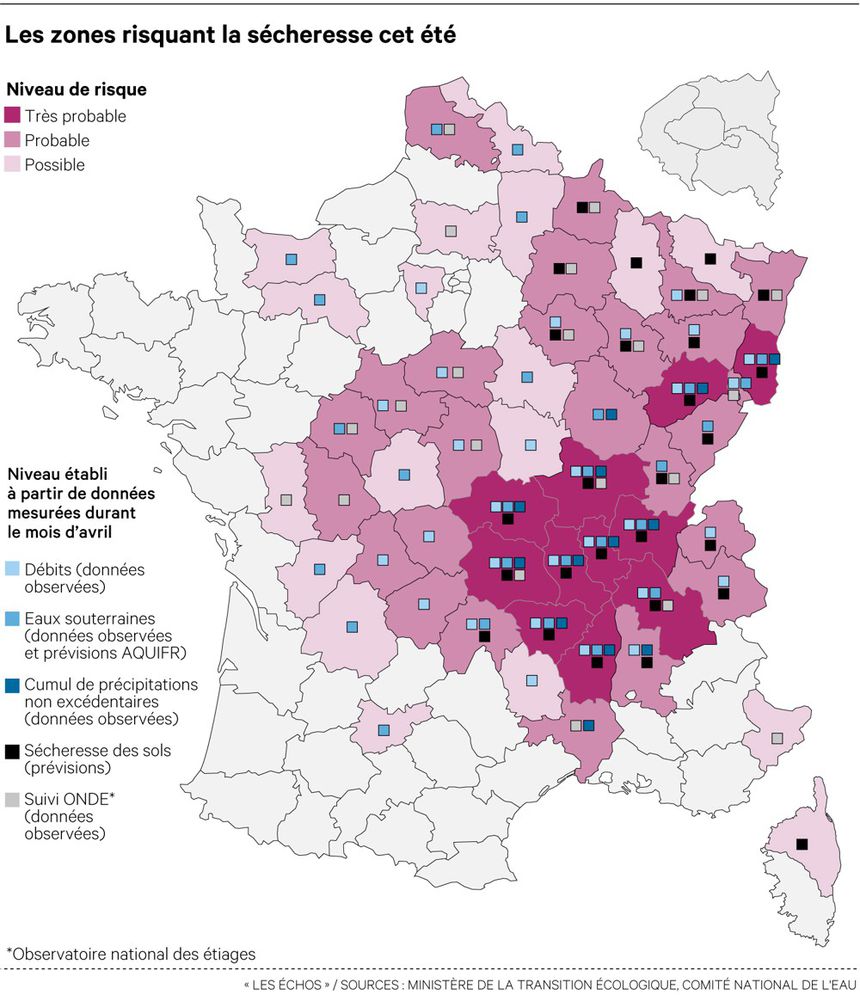
Why collect rainwater
Before explaining to you how to capture rainwater and giving you our advice on the selection and sizing of your tank, let's take a look at the advantages of recovery.
More than 93% of water consumption does not require the use of potable water . This gives an overview of the savings potential.
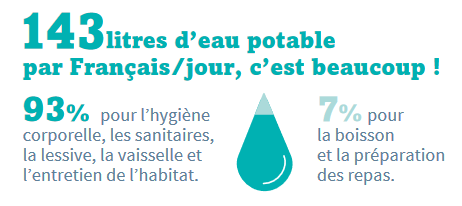
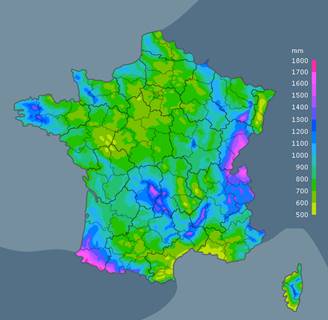
Source: meteo-express.com
Nowadays water is precious and groundwater is dry, which is why it is important to reuse a free resource that falls from the sky.
Depending on the region in France, rainwater harvesting is strongly recommended, particularly in regions with low rainfall.
During periods of drought , a rainwater recovery tank allows you to water your vegetation and gardens using a reusable resource: rainwater.
You gain autonomy from climatic hazards and variations in the price of water.
Rainwater can be used for different outdoor uses:
- Water your garden
- Clean your car
- Terrace and floor cleaning
- Fill your swimming pool / solar shower
Rainwater can also be used for uses within the home.
- Cleaning and maintenance
- Washing machine and washing machine
- Toilet water
The economic benefits of rainwater harvesting
On average, a household of four people spends around €600 per year on water .
Of course, this is an average. A family with a 1,000 m² garden and a swimming pool will not have the same consumption as a couple in a small Parisian accommodation.
Calculate your potential savings using rainwater: discover our article dedicated to the savings made using a tank.
The savings made thanks to a rainwater recovery tank are measured over the long term. If you have a garden or outdoor space, this will be even more profitable. We must also consider the evolution, most often upwards, of the price of water.
Using rainwater will also save you money by preserving your washing machines and your installations. In fact, this water is softer and it does not contain dangerous or aggressive substances for your equipment (less chlorine in particular).
You therefore consume less electricity (the heating element of your washing machine is not scaled, it requires less energy). So, you increase the lifespan of your equipment.
The ecological and civic gesture
Collecting rainwater is also an ecological choice , saving drinking water and not putting strain on the groundwater that supplies the networks. You actively participate in the preservation of this resource.
Furthermore, in some municipalities, rainwater is mixed with household wastewater and when it rains, the treatment plants are saturated. Recovering your water is an eco-citizen approach that allows you to limit the treatment of dirty water carried out by communities .
Your garden will never be better watered than with rainwater: this is natural (untransformed) and it has the benefit of not being limey unlike the water that flows through our gardens. networks.
Warning: do not confuse septic tank and rainwater recovery tank
The difference is important, because a sewage pit must constantly remain full of water. This means that the manufacturing technique of this tank does not require significant physical resistance since it will always be filled with water.
A rainwater collection tank, which can be completely empty, has a physical resistance that allows it to withstand the pressure of the earth without there being any water inside. This is a crucial difference that impacts the price of your tank.
How to choose your rainwater recovery tank?
To choose your future tank, here are the steps to follow:
- What is the volume of water that I can recover depending on my home and my land (size, roof, rainfall, analysis of constraints under the land)?
- What is my budget?
- Overhead or buried tank?
- Study and validate, once the tank possibilities have been defined, the desired use: installation dedicated only to the exterior or which will also supply the house, possibly with debacterization of the water?
How many liters of rainwater can I collect with my roof?
The number of liters you can recover will depend on your roof's recovery capacity and the rainfall in your area.
1. Calculating your recovery capacity
To calculate recovery capacity, you need to know:
- The surface area of your roof and its type (flat roof or with tiles), as well as its inclination .
- Water precipitation in your geographic area. It is also called annual rainfall.
These parameters can affect the amount of water you potentially harvest. To know the volume of the tank will be suitable for your construction or renovation project, you must determine your needs.
2. Calculation of your rainwater needs
Depending on your household, your house, the garden, your habits, estimate the volume of water you want to store.
Your water bills from previous years can also give you an indication of your current consumption. There is, on average, 40 m³/year/person .
Please note, this data varies greatly depending on region, habits and even age.
As we saw previously, of this drinking water, more than 90% could be replaced by rainwater (filtered and with the appropriate installation).
3. Calculation of the volume of the tank
Find our article dedicated to sizing your tank . Once you have determined this size and this volume of water to store, your choice of tank will be simpler.
For example, if your use is only for gardening and you need 1000 liters, an above-ground tank (also called a tank) may be a suitable solution.
On the other hand, if your needs are greater and they are also intended for household (indoor) use, then the buried tank will probably be more suitable than the above-ground tank.
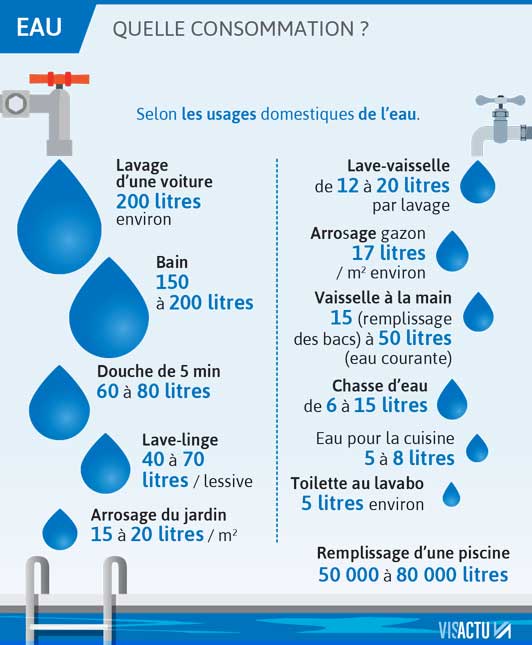
What is my budget for storing rainwater?
Determining your budget is an integral part of the rainwater harvesting project, it is an essential point in your search for tanks. How much money do you want to devote to this project?
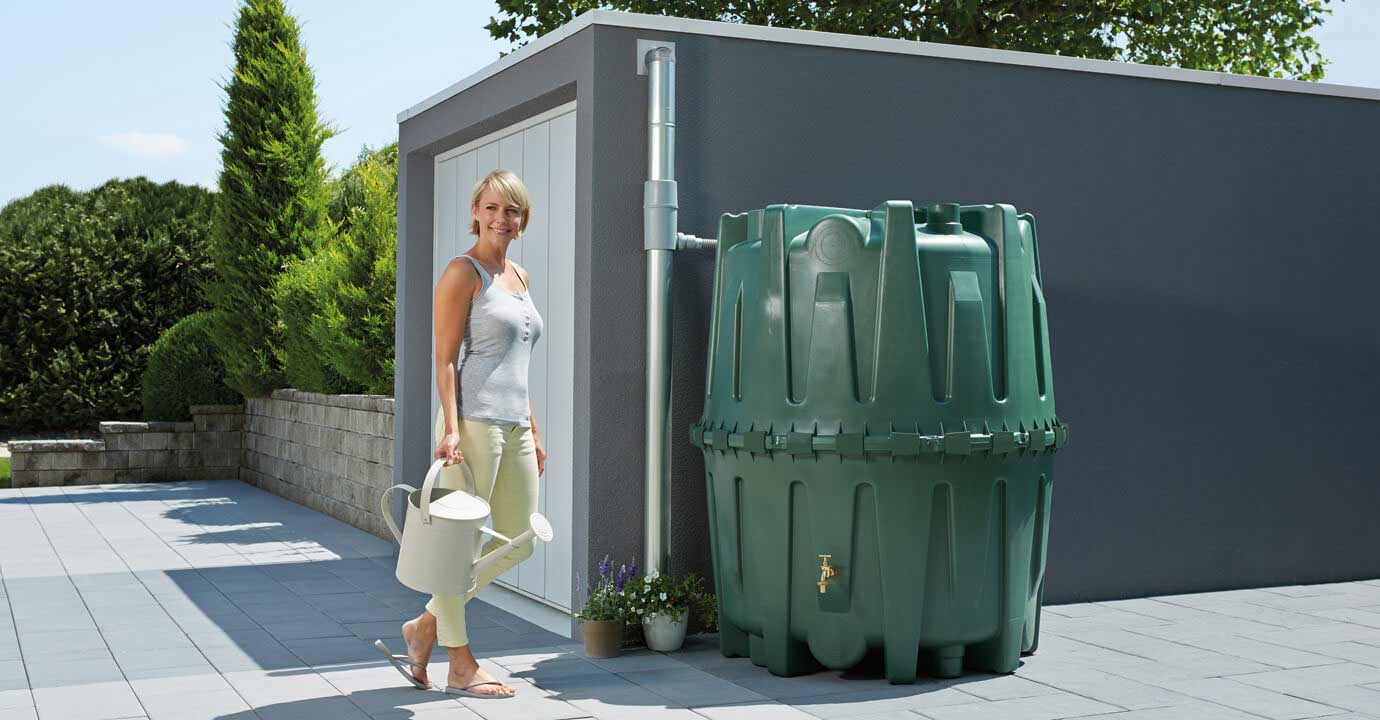
Budget for an above ground tank
Overhead tanks are more economical for 4 reasons:
- Lower volume in general
- The fact that there is no need for intervention on the part of the excavator and
- easy installation
- A design that has less significant physical constraints (resistance)
The price varies from 200 to around 3,000 euros, depending on the brand and size. Consider checking the possibility of installing a rainwater collector on one of your gutters. It is used to collect rainwater that goes down into your gutter. It will also ensure an initial filtration of the water collected. It is also planned to let the water pass if your tank is already full.
Optional: we recommend connecting a pump to your tank in order to be able to water your garden with pressure and connect your water jet to it.
A good plan
If you want to install an above-ground tank to collect up to 4,800 liters: you connect Hercule tanks to reach the desired volume. The budget for 3 tanks of the Hercule model (3 × 1600 liters) with a small pump will cost you around €2,000.
Apart from this financial aspect, consider that these tanks will occupy a space to consider in your plans. While the buried tanks will be “invisible”.
Price for an underground tank
Investing in a 4,000 liter underground tank with a management console and the excavator's work will cost around 5,000 euros.
Indeed, although the buried tank has the obvious advantage of being discreet and saving space around your property, this involves earthworks .
Consider including earthworks and plumber costs in the cost of your project. The first will make the hole in your garden to accommodate the cistern; the second will install the management console for your installation.
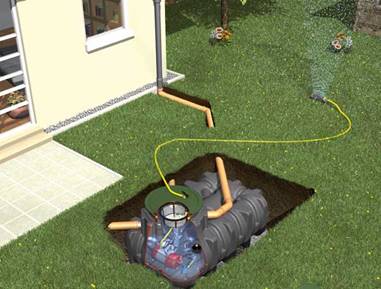
To know :
You must declare and maintain your tank
If your installation is connected to the collective sanitation network, you must make a declaration of use to your community (town hall). It is a legal obligation. You will be asked for a fee .
In addition, you must prove that you provide regular maintenance and monitoring of your installation (every 6 months). Checks can be carried out by the town hall to verify that no contamination exists in the public network.
Water collector regulationsAnalyze your possibilities based on your land and habitat
Considering the constraints of your land (presence of rock, surface, slope) but also of your home (swimming pool, wall, well, pipe), your choice of tank must take these elements into account.
Before choosing, you will have to look at what you can do in terms of connection and terrain.
Do you have the ideal location to install your tank?
If you want to put your tank in your basement above ground or outside, you will be limited to small tanks of approximately 1000 to 1500 L.
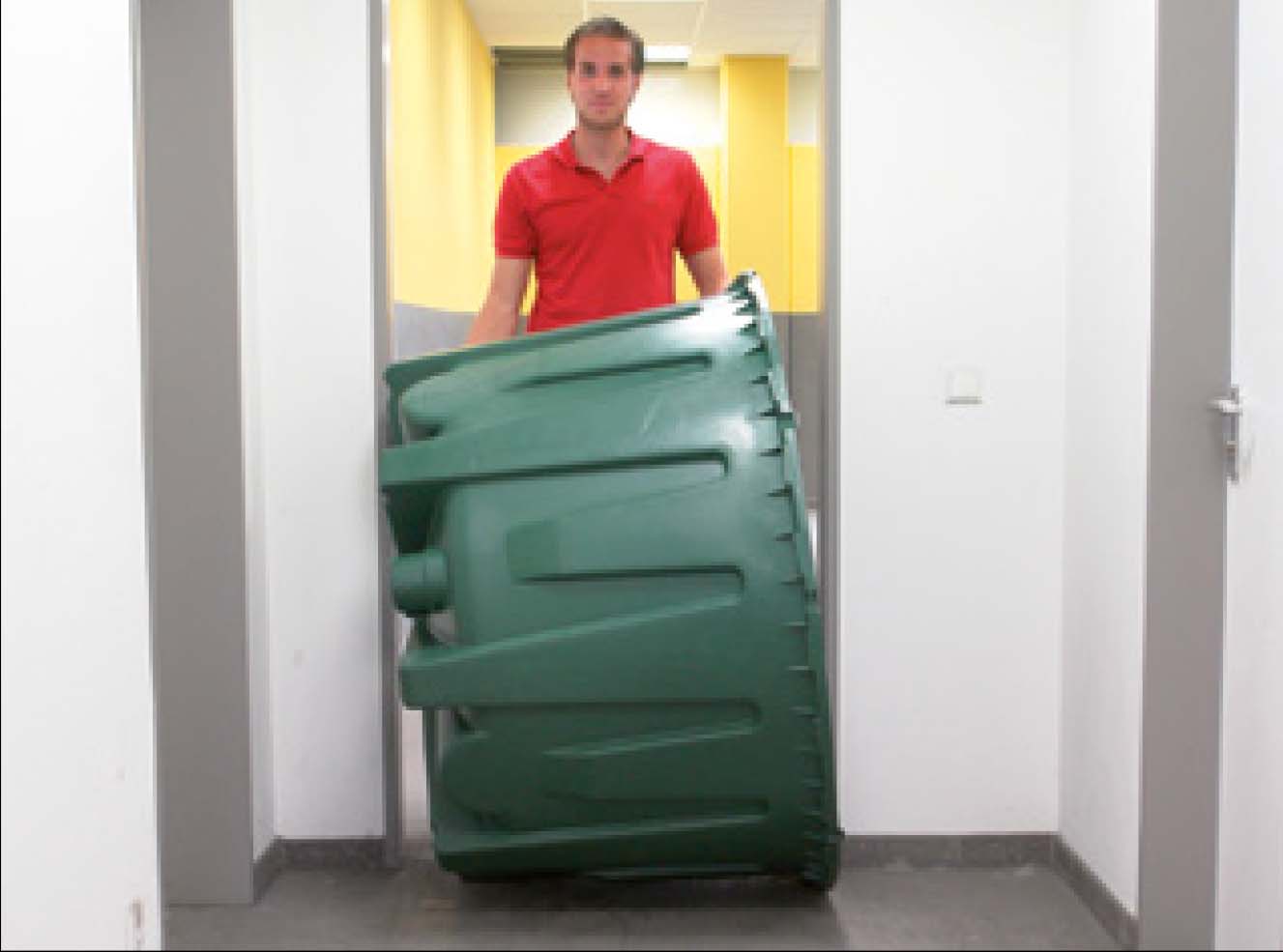
Choose the model: outdoor or buried tank
You want to install an overhead tank
With overhead tanks, you will quickly be limited in volume, and therefore in rainwater recovery capacity. They generally range from 500 l to 3,000 l. These are the most classic dimensions which are marketed by manufacturers.
However, you can put several Hercules tanks next to each other to increase the volume. This is the only solution to benefit from a greater number of liters with overhead tanks.
The Hercule model is very practical, because its half-shell fits through a standard door . You can easily lower your tanks into your basement directly through your door and then assemble them. You potentially store up to 3,200 L by coupling two Hercule tanks without having to go through an underground installation.
You want to bury your tank
There are two types of buried tanks : round and extra flat.
Round tanks have the advantage of taking up less total surface area. This reduces certain constraints linked to vehicle passage in particular.
However, we have to dig much deeper to install the round tanks. They offer the largest storage capacities. For example, at GRAF, it ranges from 2,700 L to 122,000 L.
For this reason, the upstream study of the possibilities and constraints of your land is essential: passage of pipes, rock, passage of heavy vehicles or trucks.
As for extra flat tanks, they have a very important advantage: the burial depth is reduced compared to a round tank. This can be a major element to consider following the analysis of the constraints of your land. This also affects the price of your earthworks.
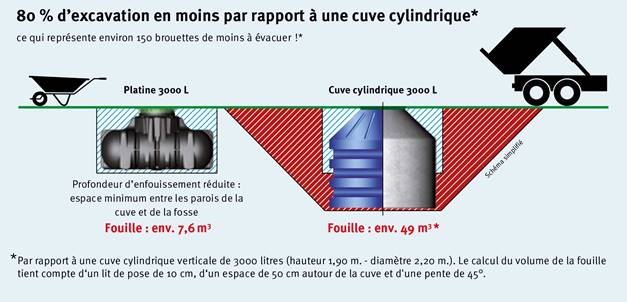
Lacentrale-eco's advice: GRAF, quality and robustness for tanks
You now know all the essential criteria for choosing your rainwater recovery tank (needs, size, price, aesthetics).
Lacentrale-eco recommends the manufacturer GRAF. This German company has specialized in tanks since 1962. It is recognized for the quality and longevity of these products. 70% of its raw materials come from recycling . GRAF has invested in its own recycling site . It also has a production site in Alsace .
We have chosen to offer you a selection of products that we have tested. These tanks are very robust and the brand offers long guarantees.
GRAF overhead tanks
The overhead tanks/tanks from the manufacturer GRAF come in different formats: tanks, tanks, etc. Of different sizes with different models.
The manufacturer opts for different types, whether concealed tanks or basic tanks.
Lacentrale-eco's choice: The manufacturer's flagship model in an aerial tank is the Hercule model which is excellent value for money : resembling a barrel, the smallest diameter measures 109 cm, and the largest 135 cm.
Its height of 160 cm allows it to be easily placed outdoors or in a cellar. Several tanks can be connected together to reach a volume of 6,400 liters.
Why this model:
- Very easy to assemble (less than 10 minutes)
- Little price
- Can connect to other tanks
GRAF underground tanks
The buried tanks from the manufacturer GRAF are available in different formats : extra flat (model: platinum), very large format version (model: Carat XXL).
These tanks save your drinking water consumption while preserving groundwater. These ranges are perfectly suited to outdoor use (watering, car washing) or for the home (toilet and washing machine supply) thanks to numerous accessories.
Our systems are also suitable for pedestrian crossings or vehicles, heavy goods vehicles, depending on your needs.
The choice of Lacentrale-eco
The complete ECOPLUS Ultraflat platinum tank kit to bury, a turnkey and economical kit.
Why this rainwater collection kit:
- Quick and inexpensive installation thanks to reduced burial depth
- Integrated filtration
- Passage of vehicles with the use of an extension with cast iron buffer (up to 2.2 T),
- Low weight: can be handled by two people without special tools
- Modular system: several Platinum tanks can be combined
- Automatic station (home and garden)
PLATINUM underground tanks volumes from 1500 to 15000 L delivered with:
This Kit has many advantages which will allow you to have all the elements necessary for the installation of your tank. Rest assured for the long term, the tank is guaranteed for 25 years by the manufacturer.
- 1 Maxi adjustable telescopic extension with pedestrian passage cover (total height from the ground on the tank with dome: 750-1,050 mm)
- Platinum accessories pack no. 3 included:
- 1 internal Minimax-Pro filter,
- 1 anti-eddy pipe with shoe,
- 1 overflow siphon,
- 1 removable fixing sleeve,
- 1 sleeve (L. 150 mm),
- 1 PVC elbow
- 1 Habitat Eco Plus technical kit included:
- 1 Aqua-Center Basic box with Superinox 15/4 pump,
- 1 drawing set with strainer and float,
- 1 wall pass DN 100,
- 1 marking set (non-potable water),
Conclusion
Installing a rainwater recovery system is an ecological and economical gesture that improves your comfort. Installing a tank allows you to maintain a certain autonomy with regard to the increase in the number of dry days.
The different solutionsEntries help meet the constraints specific to your home and your habits, while adapting to your wallet.
We have more and more customers taking the plunge. Note that some of our European neighbors now require the installation of a tank or cistern. Let's catch up!
Do you want to make your project a reality? Contact us and join the many customers who trust us.
Products available on our website lacentrale-eco.com
Source: ADEME, VISACTU and GRAF
The photos of tanks come from the GRAF and Garantia catalog.

